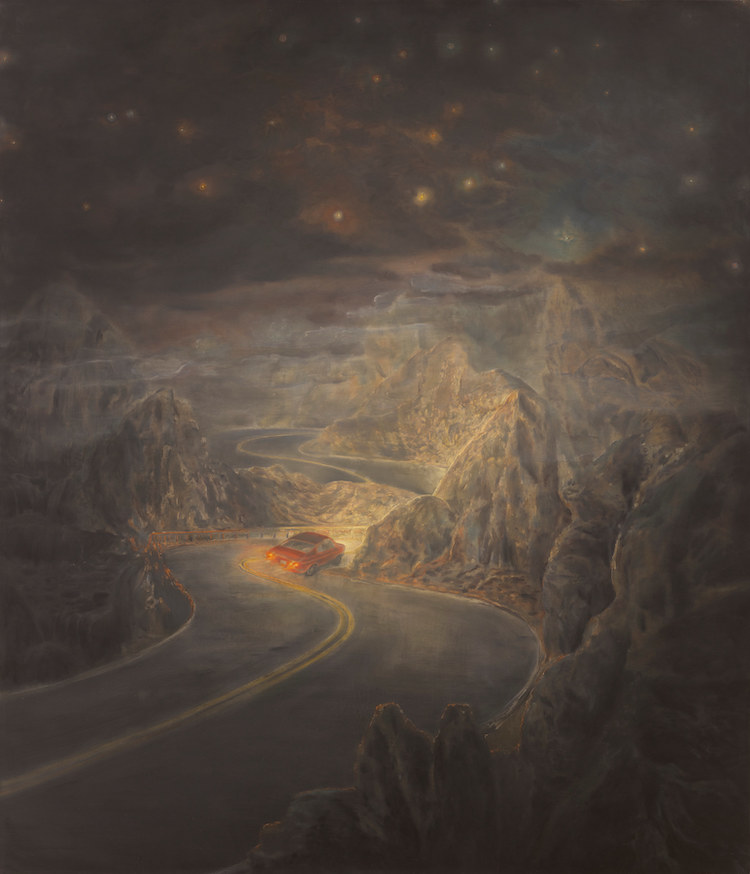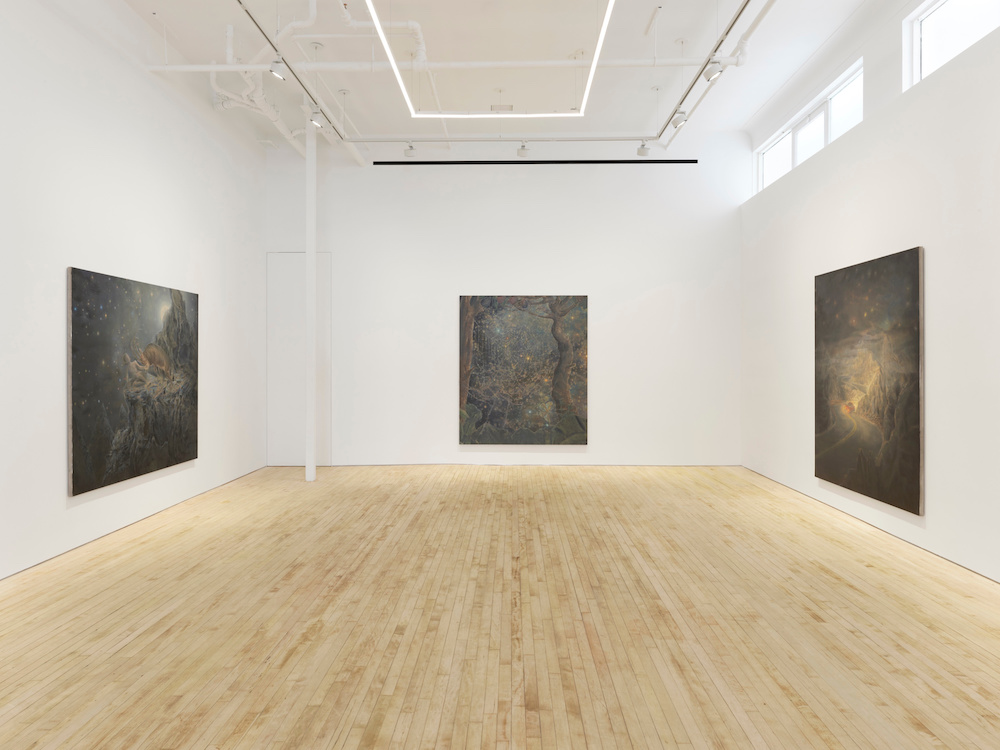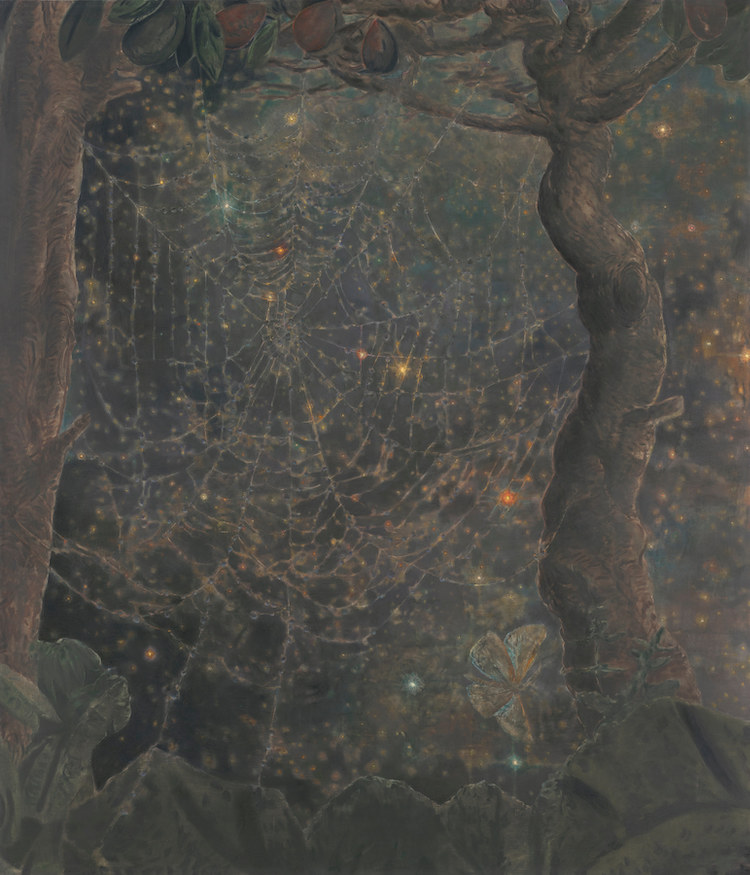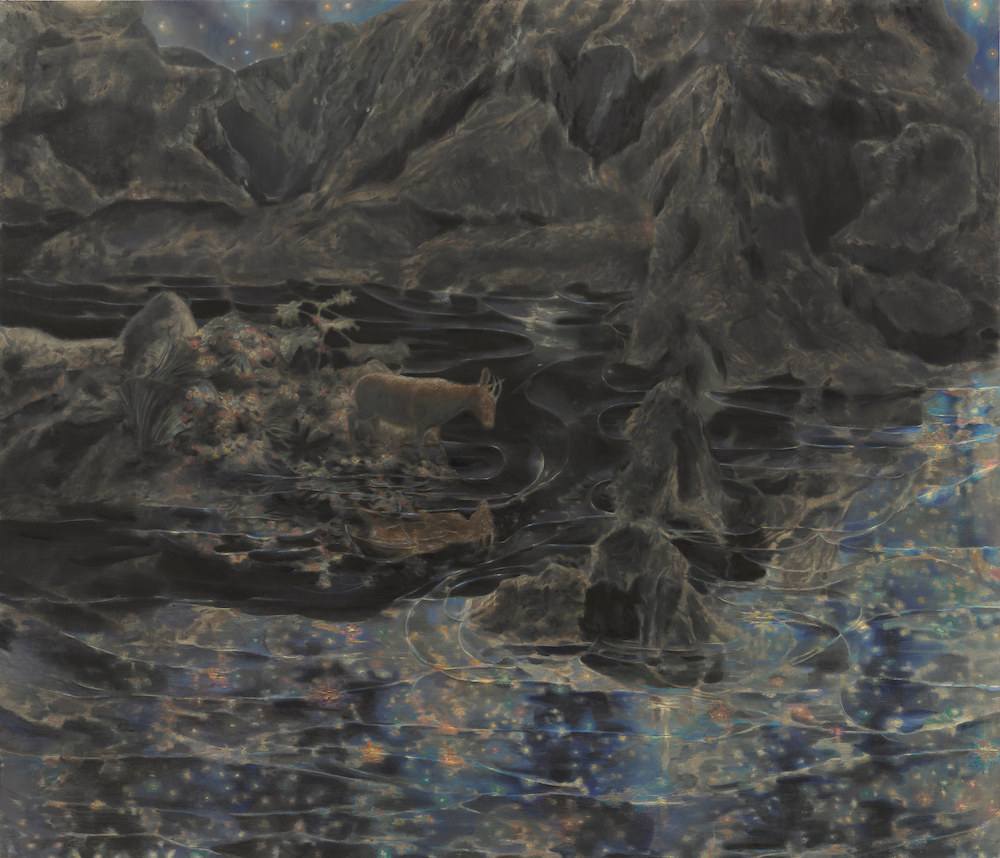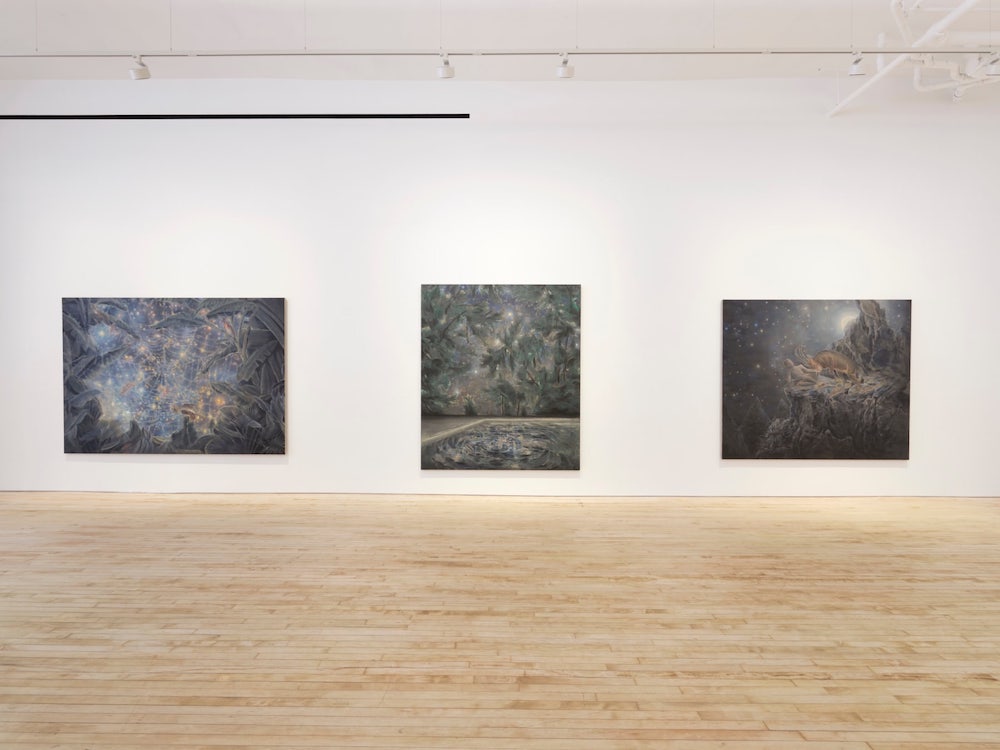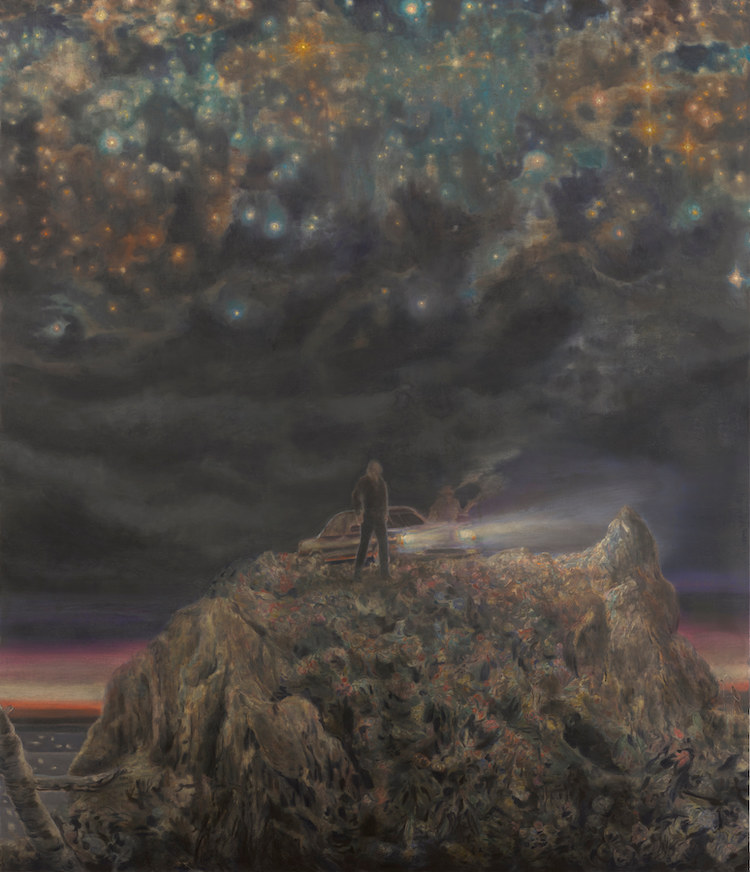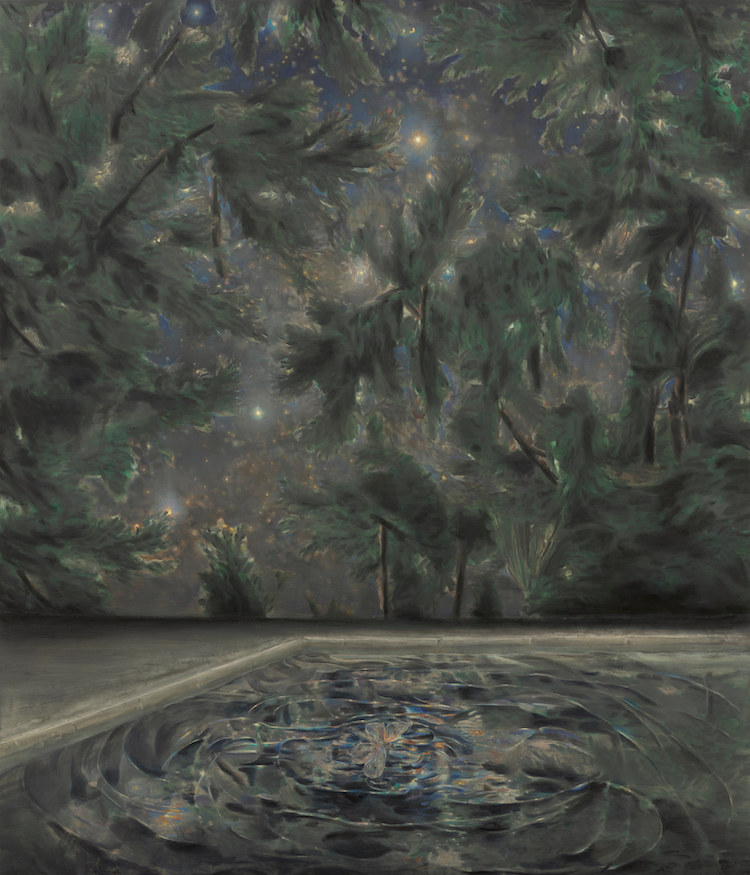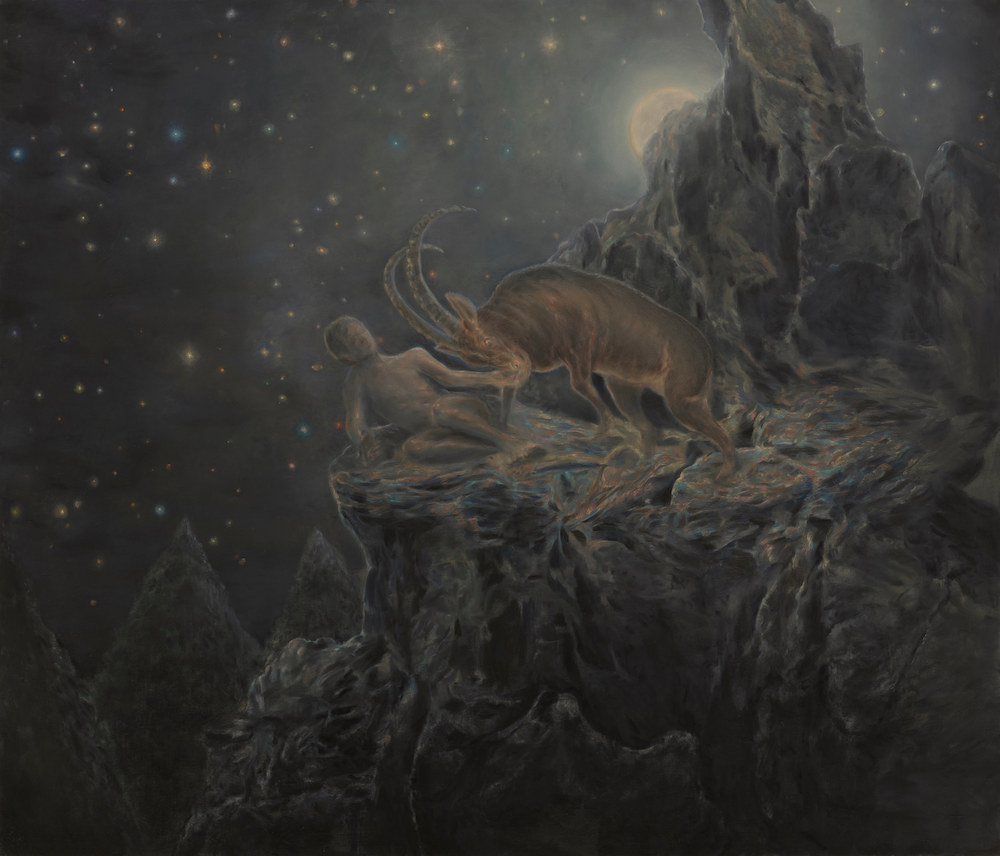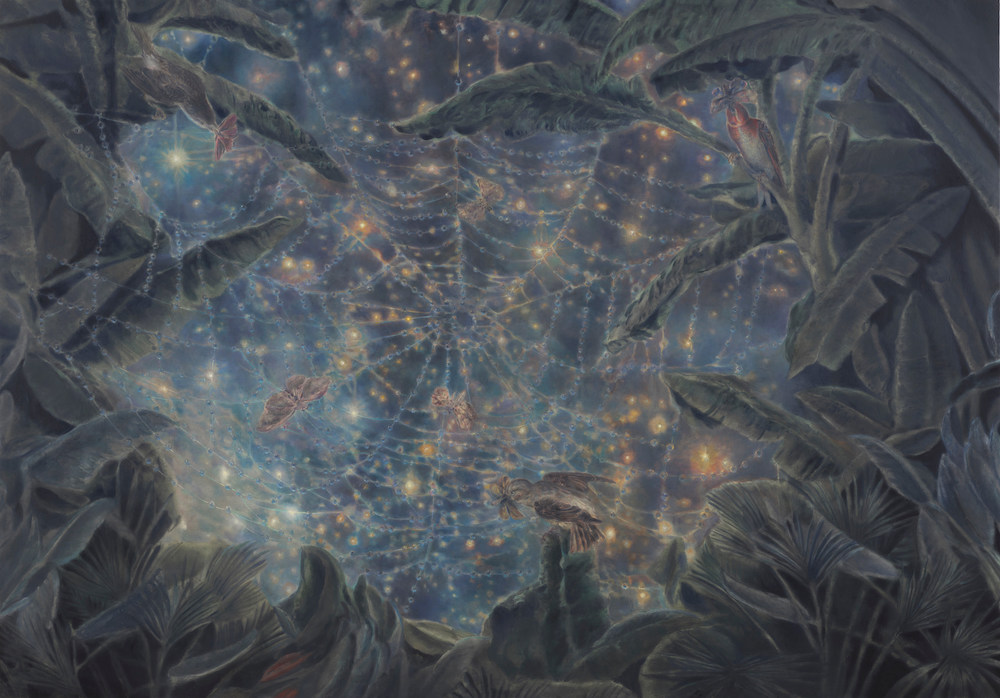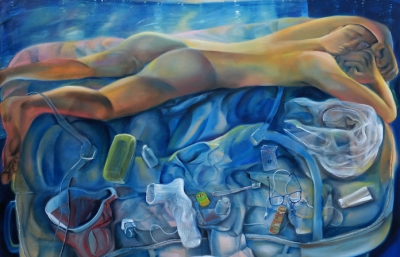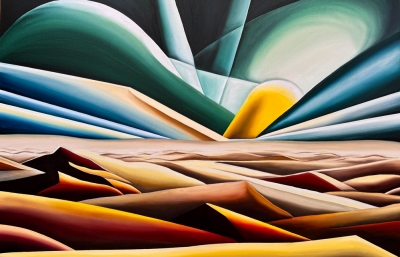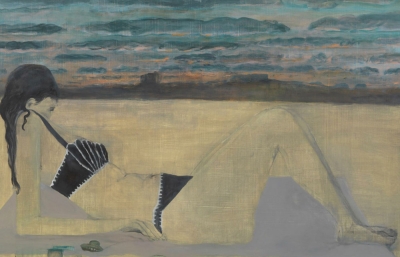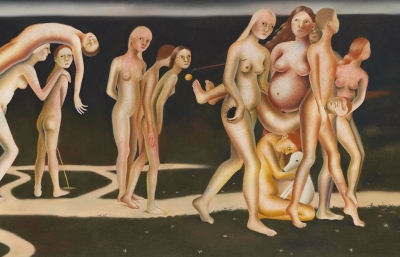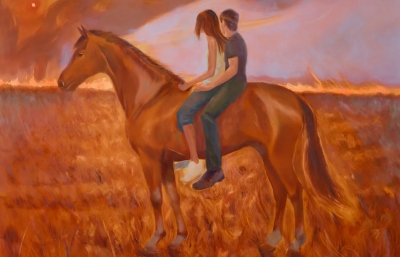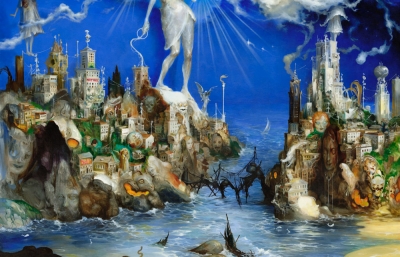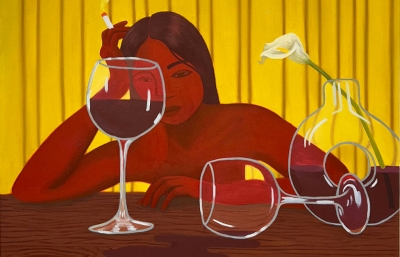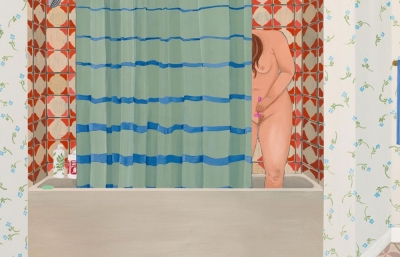Nino Mier Gallery is thrilled to announce Nocturne, an exhibition of paintings by Brooklyn-based artist Marin Majić on view at their TriBeCa gallery through October 21, 2023. Nocturne follows Ends and Odds, the artist’s first exhibition with the gallery in 2021. In Nocturne, dimly lit figures are enveloped within the dramas of the natural world. Caught between the grand, luminescent cosmos above and the intricate topographies below, shaped for years by wind and water, Majić’s subjects confront their place within the deep history of cosmic and geologic time.
In most of the exhibition’s paintings, figures materialize within vast landscapes as if born from their twinkling stars, fireflies, and reflective waters. Majić’s compositional style attends more to mood than to geographic specificity, as his exterior environments tend to evoke a generic, untamed wilderness that is enigmatic and hazy, gleaming with small pockets of light. Sometimes, however, Majić’s paintings are wholly unpopulated by human subjects, as in Midnight Spoils, wherein a thicket of palm fronds frames a glowing, finely wrought spiderweb.
Rendered in the same muted, earthen hues as their surrounding contexts, the figures often appear dwarfed by their environment—darkly lush mountains, cliffsides, and forests. As if captured during a long journey, they often are alone, inside or beside a means of transportation like a car or a boat. Such objects suggest greater narrative contexts that Majić does not elaborate upon. Instead, viewers are left to identify with the transient subject’s immersion in unknown, sublime territory.
Romantic overtones saturate the exhibition. Figures contemplate, and are destabilized by, the world around them. In Vantage Point, a lone figure stands on an outcropping of rocks as the sea vanishes into the horizon below. The short-throw beams of his car’s headlights hardly surpass the cliff’s edge, a testament to the scale of human activity in the face of such vast formations.
The exhibition’s title, Nocturne, refers to a genre of painting popular during the 18th and 19th centuries that underscores the dreamlike character of night. Majić’s paint, which he mixes with marble dust, oil, wax, and turpentine, blankets each canvas in diffuse, yawning moon- and starlight. A top layer of articulate linework rendered in colored pencil accentuates the compositions, bringing blossoms of color to otherwise plaintively dark canvases. He understands this process as a kind of sculpting on the canvas, as he carves into layers of paint to superimpose focal points within each composition, the rest characterized by an obscurity recalling the visual imprecision of distant memory.

